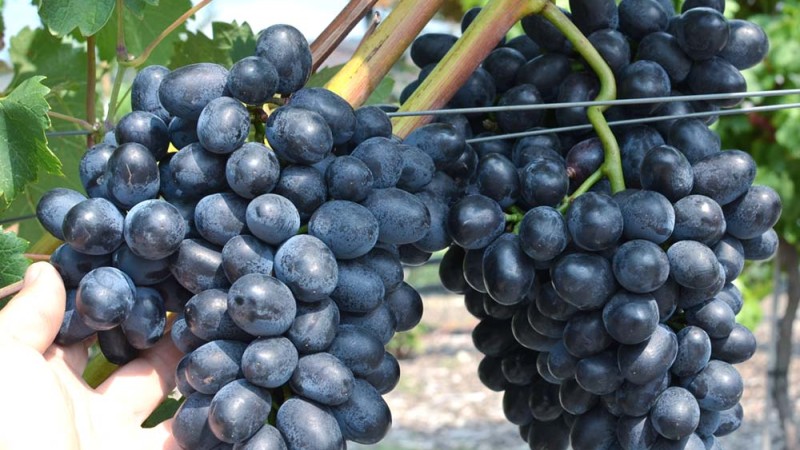
From the point of view of resistance to fungal diseases, all grape varieties can be divided into a group resistant to fungal diseases and frost, called complex resistant hybrids, and the rest are not resistant. Growing varieties that are not resistant to fungal diseases requires several treatments of the vine with chemical preparations. Despite all the efforts of the winegrower, under strong pressure from fungal diseases, sometimes it is not possible to save the entire harvest and the quality of the grapes is not preserved.
We witnessed this in year 2010 when our desperate efforts to protect the vines from a severe infection were hampered by the constantly recurring rainy weather. But honestly, can you afford the latest products that are really effective against downy mildew and powdery mildew? Unpredictable rain that falls immediately after spraying will ruin all your efforts even if you use the most modern means of protection. In many cases, fungal diseases have already developed resistance to older chemical protective products. Not to mention the health risks at a time when you have no idea how much chemical residue we consume in the fruit we buy. Isn't it worth thinking about other, alternative grape varieties?
When we talk about resistant grape varieties, I mean those that only need to be treated twice. The first time before flowering and the second time just after flowering. I recommend using preparations based on elemental sulfur (THIOVIT) and copper (CUPROXAT-copper sulfate). Of course, if we talk about varieties with maximum resistance, these can be grown with proper agrotechnics completely without chemical protection.
Grapevine resistance to diseases is estimated on the 9-point international OIV scale, which is used to assess the resistance of varieties described in the Slovplant e-shop:
9 points – almost immune variety. Damage to leaf area, wood and crop is less than 5% or none without chemical protection. Grown without chemical protection
7 points – highly resistant variety. Damage to leaf surface, wood and harvest is less than 10% without chemical protection. Grown without chemical protection
5 points – sufficiently resistant variety. Damage to the leaf surface, wood and crop is less than 25% without chemical protection. Such varieties usually need two preventive sprays. One before flowering and the second after flowering when the berries reach the size of a pea
3 points – sensitive variety. Damage to the leaf surface, wood and crop is 25-50% without chemical protection. Such varieties already need 4-5 preventive sprays during the season
1 point – very sensitive varieties. These include all current varieties of Vitis vinifera. Damage to the leaf surface, wood and harvest is from 50-100% without chemical protection. Such varieties need a whole series of preventive sprayings during the season, depending on the weather.
In practice, the Husfeld scale is still used. Varieties are assigned 0, 1, 2, 3, 4 and 5 points, with 5 being the least resistant and 0 being the most resistant. You may commonly see both of these rating systems used.
Most Euro-Asian table grape hybrids have weak resistance at the level of 1-3 points. New Russian Euro-Amur and Euro-American complex interspecific hybrids have resistance at the level of 5-7 and sometimes even up to 9 points while maintaining high grape quality.
Grape varieties are divided according to their frost resistance as follows:
group I – highly resistant, tolerates -28 to -35°С while maintaining 80 – 100% of live buds
group II – sufficiently resistant, -23 to -27°С while maintaining 60 – 79% of live buds
group III – moderately hardy, -18 to -22°С while maintaining 40 – 59% of live buds
group IV – weakly resistant, -15 to -17°С while maintaining 20 – 39% of live buds
The division of grape varieties into individual groups may not be absolute and unchanging, because vegetation conditions vary from year to year and cause interannual differences in the quality of wood maturation. Most varieties and hybrid forms with complex resistance to fungal diseases also have increased frost resistance (Agat Donskoy, Muromec, Cerkevne Zvony, Vostorg Krasnyj, Viktoria and others), or medium frost resistance (Arkadia, Lora, Kodrianka).

